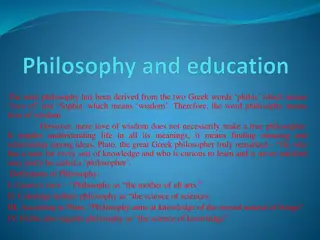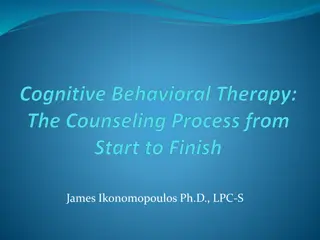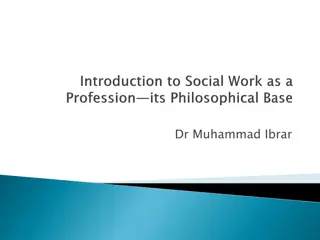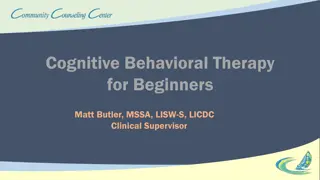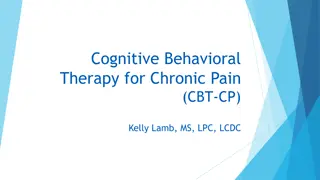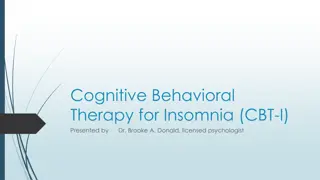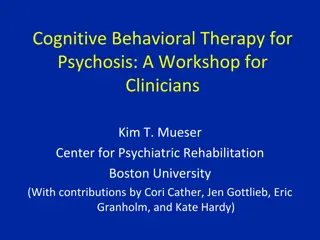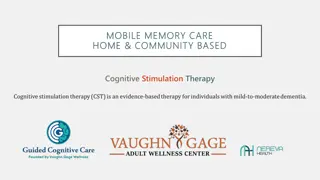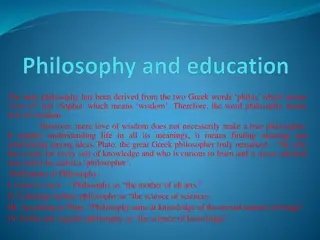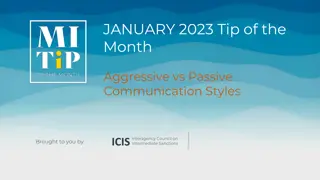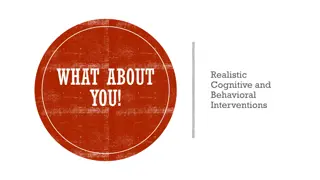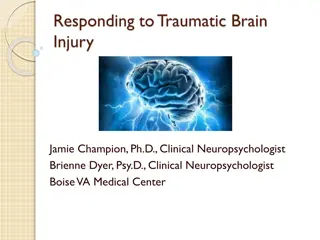Understanding Cognitive Behavioral Therapy: Philosophy and Application
Cognitive Behavioral Therapy (CBT) is rooted in the philosophy of Epiktetos, emphasizing control over one's perceptions and understanding. Founded by Albert Ellis and further developed by Aaron T. Beck, CBT delves into cognitive functioning to address psychological disorders through the interconnected nature of cognition, emotions, and behavior.
Download Presentation

Please find below an Image/Link to download the presentation.
The content on the website is provided AS IS for your information and personal use only. It may not be sold, licensed, or shared on other websites without obtaining consent from the author. Download presentation by click this link. If you encounter any issues during the download, it is possible that the publisher has removed the file from their server.
E N D
Presentation Transcript
nsanlar bir eyler yznden deil, o eylerle ilgili d nceleri y z nden ac ekerler EPIKTETOS
Cognitive behavioural therapy is based on the philosophy of Epiktetos He was actually a slave in Phrygia, 100 DC. After his release, he started to spread his philosophy According to him, our happiness and freedom is related to how extent we understand our control over things Once you understand this, you will reach inner peace
According to Epiktetos, the things that give harm to us are actually not the events, itself but how we understand and interpret them Even though CBT is based on this philosophy, it is more than that It suggests that the environment we live in, people we are related to, biology, emotions, cognitions, behaviours are affected by each other which constitutes our mental health What CBT works on is cognitions and behaviours
CBTS DEFINITION AND HISTORY Who is the founder of cognitive therapy? Albert Ellis, a New Yorker psychologist, found Rational Emotive Behavioural Therapy (REBT) in 1960s. He was the first person who refers to cognition We know CBT from Aaron T. Beck who suggested that the cognitions conceptualize mental/psychological pathologies
Cognitive theory focuses on cognitive functioning to explain psychological disorders What do we mean by cognitive functioning? The individual s self, environment, experiences and future expectations, perceptions, interpretations, and cognitions Our environmental inputs (senses and perceptions) are processed in our brain and turn into cognitive images We have cognitions and beliefs about those cognitive images Those beliefs produce our emotions which lead to our behaviours
In order to produce cognition, behaviour and emotions we need to first be aware of the stimulant Once we become aware, our cognitive process starts it is more like a lens that we see through the world and ourselves If it evokes an urge or a cognition/interpretation, we feel an emotion (or may be more) then we head towards a behaviour Cognitive therapy is interested in how a person sees the self, others and the future
How can we understand if an emotion or a behaviour is abnormal? Cognitive therapy suggests that while we are experiencing some disturbing behaviours, it can rather be due to the situation that the person experiences or to the cognitive processes the person has adopted In this case you need to compare the situation with the emotional reaction If the emotional reactions are disproportional to the situation, then we can say this is something related to the process How can we understand it is disproportional?
If the cognitive processes that constitutes the way we see and interpret the world are distorted or unfunctional then we start to experience problems If a person perceives a situation as dangerous, the emotional reaction will be fear and anxiety If a person perceives a situation nonreversible, unchangeable and responsible from this situation, the emotional reaction will be pessimistic, depressed, mournful and guilty
APPLICATION / TECHNIQUES Psychoeducation: Teaching about CT, schemas, basic cognitive model, cognitive distortions. Give education on symptoms, goal settings, etc. Use a board, draw diagrams, charts, etc. Socratic Questioning: The aim is to find the underlying basic, fundamental belief/assumption, with every question we try to make it more concrete, make the patients find rational alternative responses, exaggerations, overgeneralizations, etc. Refuting & Replacing Maladaptive Thoughts: We tend to find and catch the evidence that support our belief rather than the one undermines them. To overcome this, the patient need to challenge them constantly. Sometimes patients catastrophize their scenarios, we need to show them more catastrophic, humiliating situations. How can we show them? Direct questioning, Worst case scenario, Behavioural Experiment, Thought Recording Sheets
Relaxation Training: Tensing and releasing various groups of muscles while focusing on sensations of relaxation relax in emotions, lower the arousal level Systematic Desensitization: After teaching relaxation, name the condition, create the hierarchy that provokes anxiety. First by imagining, then apply to real life situations Exposure & Response Prevention: Idea is the same with SD but we don t use relaxation techniques. Flooding can be used.
Social Skills Training: Some people lack social skills to satisfy their interpersonal relationships. That leads to anger, depression, anxiety Depending on the level of the patient, start from introducing self, offering to eat lunch, talk about daily routines, debate on a topic Assertiveness telling appropriately what you need/feel/want by not passing others boundaries
Behavioral Rehearsal & Homework: Easy, daily activities can be really hard to perform. We grade the task into assignments, can be practiced within the session Aversion Therapy & Punishment: Condition the patient s unwanted behaviour with a noxious behaviour/circumstance/physiological reaction
https://www.youtube.com/watch?v=Wx8F9uwQTnY https://www.youtube.com/watch?v=3dPJEgcsT10 https://www.youtube.com/watch?v=W3hMmZQAdhw https://www.youtube.com/watch?v=nanU4vR993I https://www.youtube.com/watch?v=sDrakgSYvzc https://www.youtube.com/watch?v=YpgvoXv3o-w https://www.youtube.com/watch?v=_pkXuC7vsl0 https://www.youtube.com/watch?v=KRDH89uP8wI




